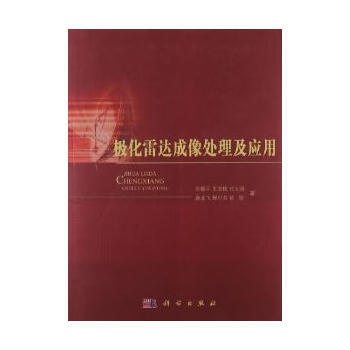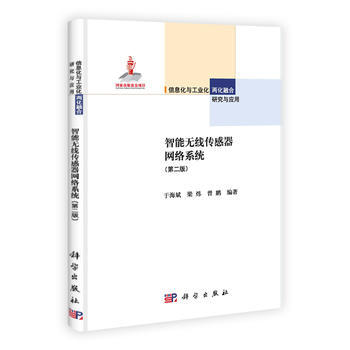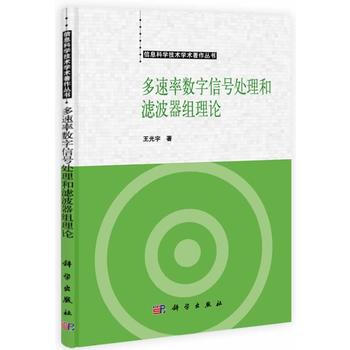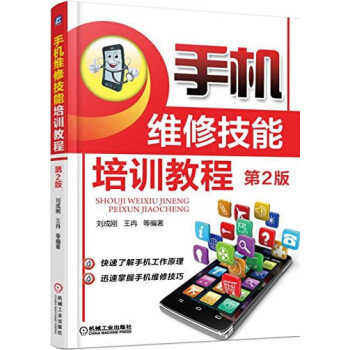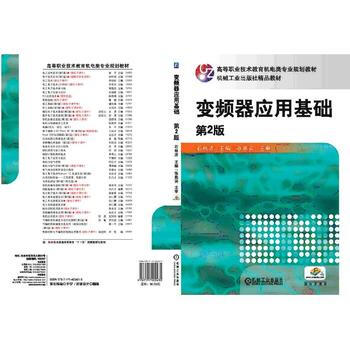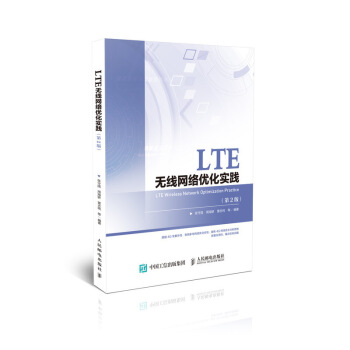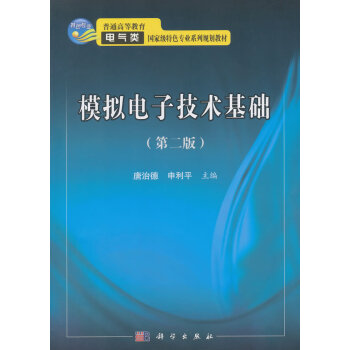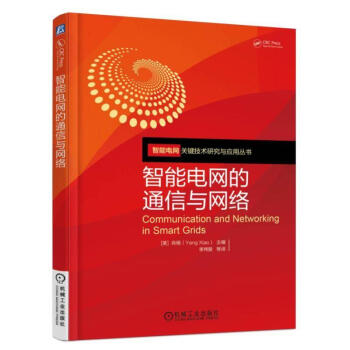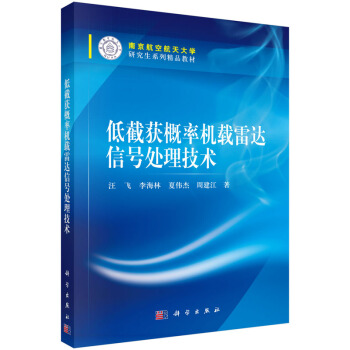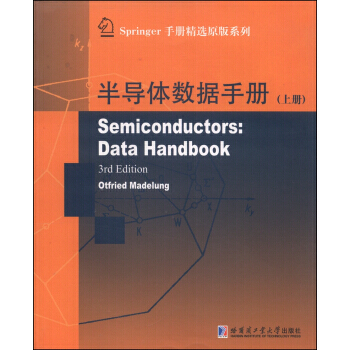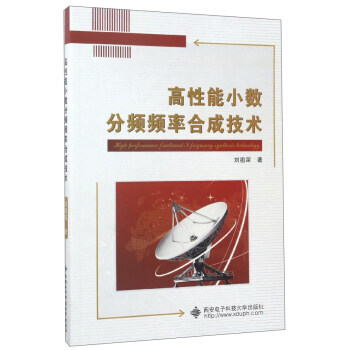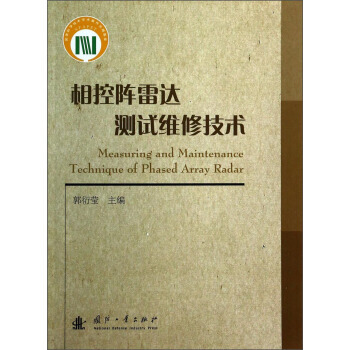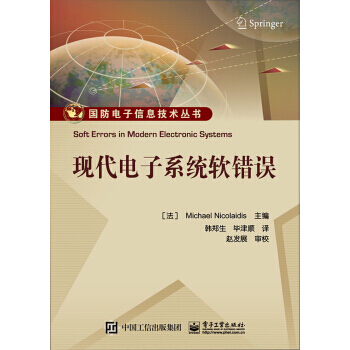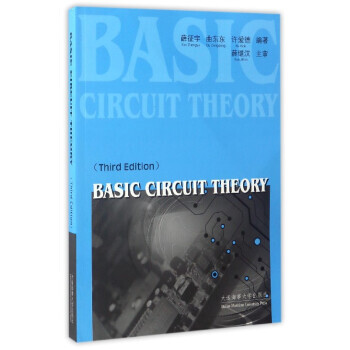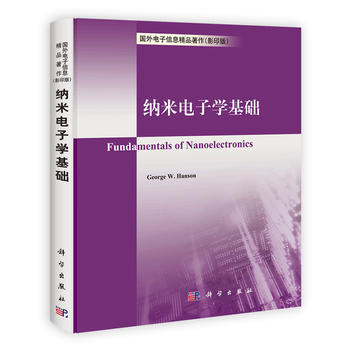

具体描述
| 图书基本信息 | |
| 图书名称 | 纳米电子学基础 |
| 作者 | 〔美〕George W.Hanson |
| 定价 | 80.00元 |
| 出版社 | 科学出版社 |
| ISBN | 9787030343826 |
| 出版日期 | 2012-06-01 |
| 字数 | |
| 页码 | |
| 版次 | 1 |
| 装帧 | 平装 |
| 开本 | 16开 |
| 商品重量 | 0.640Kg |
| 内容简介 | |
| 纳米电子学基础分三个部分,分别在纳米物理学、单电子效应和多电子效应方面进行介绍,内容丰富、论述详实。书中有很多实验结果用来支持文中描述的物理概念,这使读者能够看到概念的真实性以及在实际技术中的重要应用,还有大量的章末问题能加强读者解决问题的能力。纳米电子学基础是本真正适用于大学工程和应用科学学生的纳米电子学教科书。 |
| 作者简介 | |
| 目录 | |
| PREFACE PHOTO CREDITS PART Ⅰ FUNDAMNTALS OF NANOSCOPIC PHYSICS 1 INTRODUCTION TO NANOELECTRONICS 1.1 The'Top-Down'Approach 1.1.1 Lithography 1.2 The 'Bottom-Up'Approach 1.3 Why Nanoelectronics 1.4 Nanotechnology Potential 1.5 Main Points 1.6 Problems 2 CLASSICAL PARTICLES,CLASSICAL WAVES,AND QUANTUM PARTICLES 2.1 Comparison of Classical and Quantum Systems 2.2 Origins of Qnantum Mechanics 2.3 Lighl as Wave,Light as a Partic1e 2.3.1 Light as a Particle,or Perhaps a Wave-The Early Years 2.3.2 A Little Later-Light as a Wave 2.3.3 Finally,Light as Quantum Particle 2.4 Electrons as Particles.Electrons as Waves 2.4.1 Electrons as Particles-The Early Years 2.4.2 A Little Later-Electrons(and Everything Else)as Quantum Particles 2.4.3 Further Development of Quantum Mechanics 2.5 Wavepacket and Uncertainty 2.6 Main Points 2.7 Problems 3 QUANTUM MECHANIS OF ELECTRONS 3.1 General Postu1ates of Quantum Mechanics 3.1.1 Operators 3.1.2 Eigenvalues and Eigenfunctions 3.1.3 Hermitian Operators 3.1.4 Operators for Quantum Mechanics 3.1.5 Measurement Probability 3.2 Time-Independent Schrdinger's Equation 3.2.1 Boundary Conditions on the Wavefunction 3.3 Analogies Between Quantum Mechanics and Classical Electromagics 3.4 Probabilistic Current Density 3.5 Multiple Particle Systems 3.6 Spin and AnguIar Momentum 3.7 Main Points 3.8 Problems 4 FREE AND CONFINED ELECTRONS 4.1 Free E1ectrons 4.1.1 One-Dimensional Space 4.1.2 Three-Dimensional Space 4.2 The Free Electron Gas Theory of Metals 4.3 Electrons Confined to a Bounded Region of Space and Quantum Numbers 4.3.1 One-Dimensional Space 4.3.2 Three-Dimensional Space 4.3.3 Periodic Boundary Conditions 4.4 Fermi Level and Chenmical Potential 4.5 Partially Confined E1ectronsFinite Potential Wells 4.5.1 Finite Rectangular well 4.5.2 Parabolic WellHarmonic Oscillator 4.5.3 Triangular Well 4.6 Electrons Confined to AtomsThe Hydrogen Atom and the Periodic Table 4.6.1 The Hydrogen Atom and Quantum Numbers 4.6.2 Beyond HydrogenMultiple Electron Atoms and the Periodic Table 4.7 Quantum Dots,Wires,and Wells 4.7.1 Quantum Wells 4.7.2 Quantum Wires 4.7.3 Quantum Dots 4.8 Main Points 4.9 Problems 5 ELECTRONS SUBJECT TO A PERIODIC POTENTIAL-BAND THEORY OF SOLIDS 5.1 Crystalline Materials 5.2 Electrons in a Periodic Potential 5.3 Kronig-Penney Model of Band Structure 5.3.1 Effective Mass 5.4 Band Theory of Solids 5.4.1 Doping in Semiconductors 5.4.2 lnteracting Systems Model 5.4.3 The Effect of an Electric Field on Energy Bands 5.4.4 Bandstructures of Some Semiconductors 5.4.5 Electronic Band TransitionsInteraction of Electromagic Energy and Materials 5.5 Graphene and Carbon Nanotubes 5.5.1 Graphene 5.5.2 Carbon Nanotubes 5.6 Main Points 5.7 Problems PART Ⅱ SINGLE-ELECTRON AND FEW-ELECTRON PHENOMENA AND DEVICES 6 TUNNEL JUNCTIONS AND APPLICATIONS OF TUNNELING 6.1 Tunneling Through a Potentia1 Barrier 6.2 Potentia1 Energy Profiles for Materia1 Interfaces 6.2.1 Metal-Insulator, Metal-Semiconductor,and Metal-Insulator-Metal Junctions 6.3 Applications of Tunneling 6.3.1 Field Emission 6.3.2 Gate-Oxide Tunneling and Hot Electron Effects in MOSFETs 6.3.3 Scanning Tunneling Microscope 6.3.4 Double Barrier Tunneling and the Resonant Tunneling Diode 6.4 Main Points 6.5 Problems 7 COULOMB BLOCKADE AND THE SINGLE-ELECTRON TRANSISTOR 7.1 Coulomb Blockade 7.1.1 Coulomb Blockade in a Nanocapacitor 7.1.2 Tunnel Junctions 7.1.3 Tunnel Junctions Excited by a Current Source 7.1.4 Coulomb Blockade in a Quantum Dot Circuit 7.2 The Single-Electron Transistor 7.2.1 Single-Electron Transistor Logic 7.3 Other SET and FET Structures 7.3.1 Carbon Nanotube Transistors (FETs and SETs) 7.3.2 Semiconductor Nanowire FETs and SETs 7.3.3 Molecular SETs and Molecular Electronics 7.4 Main Points 7.5 Problems PART Ⅲ MANY ELECTRON PHENOMENA 8 PARTICLE STATISTICS AND DENSITY OF STATES 8.1 Density of States 8.1.1 Density of States in Lower Dimensions 8.1.2 Density of States in a Semiconductor 8.2 Classical and Quantum Statistics 8.2.1 Carrier Concentration in Materials 8.2.2 The Importance of the Fermi Electrons 8.2.3 Equilibrium Carrier Concentration and the Fermi Level in Semiconductors 8.3 Main Points 8.4 Problems 9 MODELS OF SEMICONDUCTOR QUANTUM WELLS,QUANTUM WIRES,AND QUANTUM DOTS 9.1 Semiconductor Heterostrures and Quantum Wells 9.1.1 Confinement Models and Two-Dimensional Electron Gas 9.1.2 Energy Band Transition in Quantum Wells 9.2 Quantum Wires and Nanowires 9.3 Quantum Dot and Nanoparticles 9.3.1 Applications of Semiconducting Quantum Dots 9.3.2 Plasmon Resonance and Metallic Nanoparticles 9.3.3 Functionalized Metallic Nanoparticles 9.4 Fabrication Techniques for Nanostructures 9.4.1 Lithography 9.4.2 Nanoimprint Lithography 9.4.3 Split-Gate Technology 9.4.4 Self-Assembly 9.5 Main Points 9.6 Ptoblems 10 NANOWIRES,BALLISTIC TRANSPORT,AND SPIN TRANSPORT 10.1 Classical and Semiclassical Transport 10.1.1 Classical Theory of ConductionFree Electron Gas Model 10.1.2 Semiclassical Theory of Electrical ConductionFermi Gas Model 10.1.3 Classical Resisance and Conductance 10.1.4 Conductivity of Metallic Nanowires-The Influence of Wire Radius 10.2 Ballistic Transport 10.2.1 Electron Collisions and Length Scales 10.2.2 Ballistic Transport Model 10.2.3 Quantum Resistance and Conductance 10.2.4 Origin of the Quantum Resistance 10.3 Carbon Nanotubes and Nanowires 10.3.1 The Effect of Nanoscale Wire Radius on Wave Velocity and Loss 10.4 Transport of Spin,and Spintronice 10.4.1 The Transport of Spin 10.4.2 Spintronic Devices and Applications 10.5 Main Points 10.6 Problems APPENDIX A SYMBOLS AND ACRONYMS APPENDIX B PHYSICAL PROPERTIES OF MATERIALS APPENDIX C CONVENTIONAL MOSFETS APPENDIX D ANSWERS TO PROBLEMS Problems Chapter2:Classical Particles,Classical Waves,and Quantum Particles Problems Chapter3:Quantum Mechanics of Electrons Problems Chapter4:Free and Corifined Electrons Problems Chapter5:Electrons Subject to a Periodic PotentialBand Theory of Solids Prohlems Chapter6:Tunnel Junctions and Applications of Tunneling Problems Chapter7:Cou1omb Blockade and the Single-Electron Transistor Problems Chapter8:Particle Statistics and Density of States Problems Chapter9:Models of Semiconductor Quantum Wells, Quantum Wires,and Quantum Dots Problems Chapter10:Nanowires, Ballistic Transport,and Spin Transport REFERENCES INDEX |
| 编辑推荐 | |
| 文摘 | |
| 序言 | |
用户评价
购买这本书时,我最大的期望是它能提供一个清晰的路线图,指导我如何从现有的硅基技术,过渡到下一代基于新材料或新原理的电子系统。我期待看到关于二维材料(如石墨烯、二硫化钼)作为晶体管沟道材料的优势与挑战的深入对比分析,或者对自旋电子学、光电子学在集成电路中协同工作的未来蓝图的探讨。然而,这本书的视野似乎被限制在了成熟的CMOS框架内,讨论的优化策略也大多是围绕如何让现有的技术路径走得更远。这种保守的态度,使得这本书的内容相较于近几年飞速发展的材料科学和器件物理领域,显得有些滞后。它更像是一本内容扎实的“典籍”,而非一本充满前瞻性的“指南”。对于希望站在行业前沿、预测下一个十年技术拐点的读者而言,这本书提供的是坚实的回望,却未能指向清晰的远方。
评分这本书的叙事节奏简直是一场视觉上的马拉松,尤其是在描述材料科学和器件结构搭建的部分。我得承认,作者在对微纳加工流程的细致描绘上确实下了苦功,图文并茂地展示了光刻、刻蚀、薄膜沉积等一系列步骤。但是,这种详尽到了令人窒息的程度,仿佛作者深怕读者遗漏任何一个工艺参数。每一个步骤都被拆解得支离破碎,从温度控制到气体流量,事无巨细地罗列出来。我本来希望能够理解这些工艺如何服务于某种特定的电学功能,或者如何通过精密的控制来克服纳米尺度下的随机性。结果,我得到的是一份极其详尽的“操作手册”的文本版。对于一个习惯了高屋建瓴、注重物理机制而非工程细节的读者来说,这种深入到原子层面的描述,虽然技术上无可挑剔,但在阅读的连贯性和思想的启发性上却大打折扣。读到后来,我开始感觉自己像是一个被困在巨型工厂里的工人,被要求熟悉每一台机器的每一个螺丝钉,却忘记了我们最终要制造的是什么。
评分坦白地说,这本书在理论深度和应用广度之间的平衡上出了问题。我感觉它像是一个中间地带的产物,既没有足够地深入到纯理论物理的高度去探讨新奇的量子输运现象(比如狄拉克锥的奇异行为或者非厄米系统的特性),也没有足够地扩展到目前产业界正在热炒的柔性电子、生物兼容电子或者基于新材料的传感器应用。它停留在了一个非常“安全”的学术区域——经典的半导体器件物理的放大和再阐述。例如,在讨论到器件的尺寸效应时,我期待看到关于量子隧穿或载流子散射机制在亚十纳米尺度下的定量分析,甚至是与经典模型偏离的具体数据对比。但这本书更多是定性地指出“尺寸缩小会带来这些问题”,然后就草草收场,转而讨论下一代CMOS技术的制造限制。这种蜻蜓点水的处理方式,使得无论想深挖理论还是想了解应用前沿的读者,都会感到意犹未尽,找不到一个真正能让自己沉浸其中的知识高地。
评分这本书,老实说,给我的感觉挺矛盾的。我本来是冲着对未来科技的无限遐想去的,希望能看到一些关于量子计算、拓扑绝缘体或者室温超导这些前沿概念的深度剖析,毕竟书名听起来就带着一股“未来已来”的科技范儿。然而,读完之后,我发现大部分篇幅似乎更专注于传统的半导体物理基础,比如PN结的形成、晶体管的工作原理,以及集成电路制造工艺的初级介绍。这就像你走进一家号称卖最新款跑车的展厅,结果发现里面陈列的都是打磨得锃亮的经典老爷车。当然,老爷车本身也很有价值,它们的工程美学和设计理念至今仍是经典,对于理解现代电子学的根基至关重要。但是,对于一个期待深入了解纳米尺度下量子效应如何重塑信息处理范式的读者来说,这种“回溯”显得有些过于冗长和基础。我花了大量时间在理解那些我已经通过其他渠道接触过的概念上,期待的突破性洞察和对下一代器件物理的展望,在书中却寥寥无几。这种内容上的偏差,让阅读体验像是在进行一次扎实的、但非我所愿的“基础知识复习课”。
评分我个人对书籍的语言风格有着较高的要求,我倾向于那种充满活力、能激发思考的文字,而不是教科书式的平铺直叙。这本书的写作风格极其克制和严谨,几乎到了冷酷的地步。它像是一个完美运作的机器,每一个句子都精确无误,逻辑链条密不透风,绝对不会出现任何模棱两可的表达或者富有激情的推测。这种严谨性在科学写作中是优点,但在构建一种“探索未知”的氛围时,却显得力不从心。我希望在阅读前沿科学书籍时,能感受到作者那种探索真理的兴奋感,看到一些关于“我们还不知道什么”的坦诚讨论,或者对未来可能出现的悖论进行哲学层面的思考。然而,这本书提供的是一套已经被验证的知识体系,它的边界清晰可见,没有留给读者任何想象或质疑的空间。读完后,我脑中形成的是一个稳固的、但略显僵硬的知识结构,缺乏那种能让人产生“啊哈!”时刻的火花。
相关图书
本站所有内容均为互联网搜索引擎提供的公开搜索信息,本站不存储任何数据与内容,任何内容与数据均与本站无关,如有需要请联系相关搜索引擎包括但不限于百度,google,bing,sogou 等
© 2025 book.coffeedeals.club All Rights Reserved. 静流书站 版权所有

